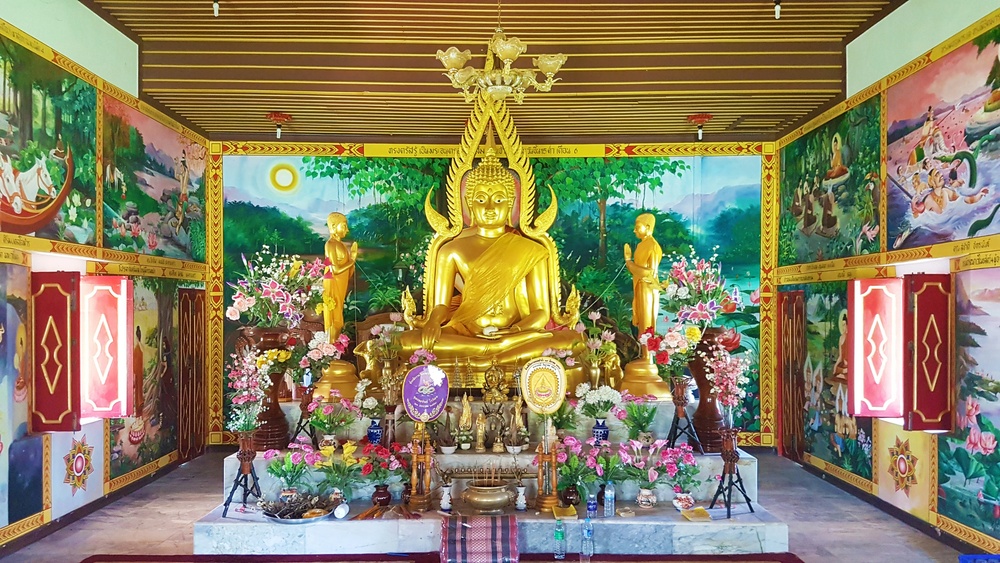Top Destinations to Explore on a Bihar Buddhist Circuit Tour
Bihar, often referred to as the spiritual heartland of India, is home to some of the most important sites in Buddhist history. A Bihar Buddhist Circuit Tour is a journey through the land where Lord Buddha attained enlightenment, shared his teachings, and inspired millions across centuries. This sacred circuit offers travelers a chance to immerse themselves in spirituality, history, and culture, exploring remarkable destinations that mark significant milestones in Buddha’s life.
If you are planning a Bihar Buddhist Circuit Tour, here are the top destinations you must include to truly experience the essence of Buddhism.
1. Bodh Gaya: The Place of Enlightenment
Bodh Gaya is undoubtedly the most revered site on the Buddhist circuit. It is here that Prince Siddhartha Gautama meditated under the Bodhi Tree and attained enlightenment, becoming the Buddha. The town attracts millions of pilgrims and tourists every year.
Highlights:
- Mahabodhi Temple: A UNESCO World Heritage Site, this temple complex houses the sacred Bodhi Tree and is a stunning example of ancient Buddhist architecture.
- Bodhi Tree: The descendant of the original tree under which Buddha meditated, it is a symbol of enlightenment.
- Meditation Monasteries: Numerous monasteries built by different Buddhist countries, including Thailand, Japan, and Tibet, showcase diverse cultures and spiritual practices.
Visiting Bodh Gaya is a deeply spiritual experience, where visitors can meditate, participate in prayers, and soak in the peaceful atmosphere.
2. Rajgir: The Ancient Meditation Hub
Rajgir, located about 70 kilometers from Bodh Gaya, is another key destination on the Bihar Buddhist Circuit Tour. This ancient city was a favorite retreat for Buddha and his disciples, offering serene hills and hot springs.
Highlights:
- Griddhakuta Hill (Vulture’s Peak): Buddha delivered many sermons here. The hill offers panoramic views and a tranquil environment perfect for meditation.
- Vishwa Shanti Stupa: This “World Peace Pagoda” is a striking white structure built by Japanese Buddhists, symbolizing peace and harmony.
- Hot Springs: Believed to have healing properties, these springs are a popular spot for visitors.
Rajgir’s natural beauty and spiritual significance make it an essential stop on the circuit.
3. Nalanda: The Seat of Ancient Learning
Nalanda was home to one of the world’s oldest universities and a major center of Buddhist learning from the 5th to 12th centuries. The ruins of Nalanda University offer a glimpse into the scholarly heritage of Buddhism.
Highlights:
- Nalanda Archaeological Site: Explore the remains of monasteries, stupas, and lecture halls that once attracted students from across Asia.
- Nalanda Museum: Houses artifacts excavated from the site and offers detailed insights into ancient Buddhist education.
- Hieun Tsang Memorial Hall: Dedicated to the famous Chinese traveler who studied at Nalanda and documented Buddhist teachings.
Nalanda enriches the Bihar Buddhist Circuit Tour by highlighting Buddhism’s intellectual and cultural contributions.
4. Vaishali: The Land of Historic Buddhist Events
Vaishali holds great significance as the place where Buddha delivered his last sermon and announced his impending Mahaparinirvana. It was also the site of the first Buddhist council held after his death.
Highlights:
- Relic Stupa: Contains relics of Buddha and is a major pilgrimage spot.
- Ashoka Pillar: An ancient pillar erected by Emperor Ashoka, inscribed with edicts promoting Dharma (moral law).
- Buddha Museum: Displays relics and artifacts related to Buddha’s time in Vaishali.
Vaishali’s peaceful environs and historical sites make it a must-visit destination on the circuit.
5. Kushinagar: The Place of Mahaparinirvana
Kushinagar is the sacred site where Lord Buddha attained Mahaparinirvana, the final passing away from the cycle of life and death. It marks the end of his earthly journey and the beginning of his eternal legacy.
Highlights:
- Mahaparinirvana Temple: Houses a large reclining Buddha statue symbolizing his peaceful passing.
- Ramnagar Stupa: An ancient stupa commemorating the cremation site of Buddha.
- Monasteries and Museums: Offer further insight into the life and teachings of Buddha.
Kushinagar is a serene and contemplative place that closes the circle of the Bihar Buddhist Circuit Tour.
Planning Your Bihar Buddhist Circuit Tour
When planning your Bihar Buddhist Circuit Tour, consider the following tips:
- Travel Routes: Most travelers start from Bodh Gaya or Patna, the capital of Bihar, and then visit other destinations like Rajgir, Nalanda, Vaishali, and Kushinagar.
- Best Time to Visit: October to March offers pleasant weather, ideal for sightseeing and outdoor activities.
- Tour Packages: Numerous operators offer guided tours covering all major sites, accommodation, and local transport.
- Cultural Etiquette: Dress modestly and respect the customs of each site to maintain the sanctity of the experience.
Why Choose the Bihar Buddhist Circuit?
The Bihar Buddhist Circuit Tour is a unique blend of spirituality, history, and culture. Each destination offers its own story, architecture, and atmosphere, providing travelers with a comprehensive understanding of Buddhism’s origins and evolution.
This circuit is suitable for pilgrims seeking spiritual growth, history enthusiasts wanting to explore ancient India, and travelers looking for serene and culturally rich experiences. The peaceful environment, combined with historical significance, makes the Bihar Buddhist Circuit a deeply rewarding journey.
Whether you’re a devout pilgrim or an inquisitive traveler, the Bihar Buddhist Circuit Tour offers an unparalleled opportunity to walk in the footsteps of the Buddha and discover the roots of one of the world’s most influential religions.

